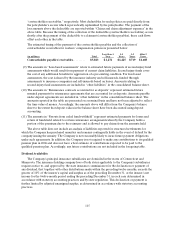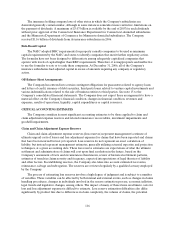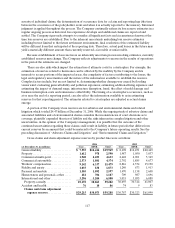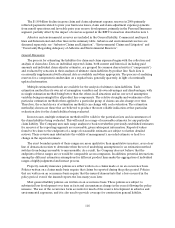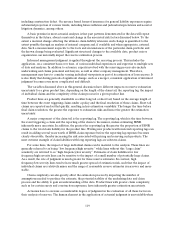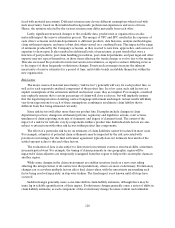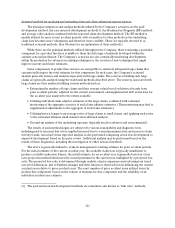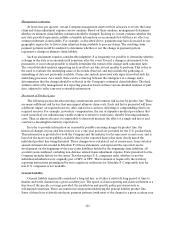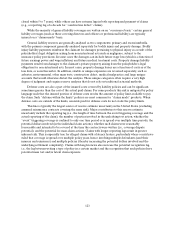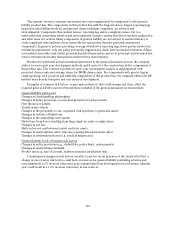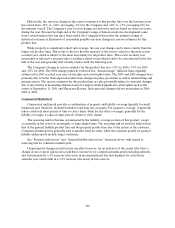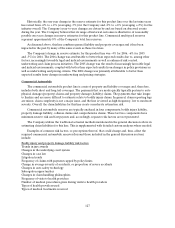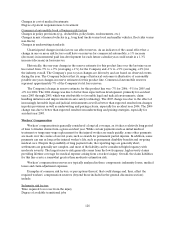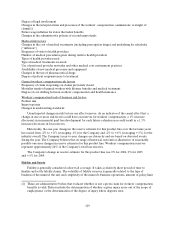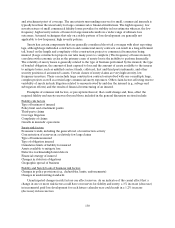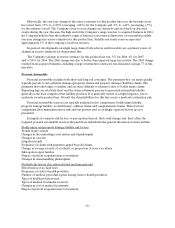Travelers 2006 Annual Report Download - page 133
Download and view the complete annual report
Please find page 133 of the 2006 Travelers annual report below. You can navigate through the pages in the report by either clicking on the pages listed below, or by using the keyword search tool below to find specific information within the annual report.
121
Actuarial methods for analyzing and estimating claim an d claim adjustment expense reserves.
The principal estimation and analysis methods utilized by the Company’s actuaries are the paid
development method, the case incurred development method(1), the Bornhuetter-Ferguson (BF) method,
and average value analysis combined with the reported claim development method. The BF method is
usually utilized for more recent accident periods, with a transition to other methods as the underlying
claim data becomes more voluminous and therefore more credible. These are typically referred to as
traditional actuarial methods. (See Glossary for an explanation of these methods.)
While these are the principal methods utilized throughout the Company, those evaluating a particular
component for a product line have available to them the full range of methods developed within the
casualty actuarial profession. The Company’s actuaries are also continually monitoring developments
within the profession for advances in existing techniques or the creation of new techniques that might
improve current and future estimates.
Some components of product line reservesare susceptible to relatively infrequent large claims that
can materially impact the total estimate for that component. In such cases, the Company’s actuarial
analysis generally isolates and analyzes separately such large claims. The reservesexcluding such large
claims are generally analyzed using the traditional methods described above. The reserves associated with
large claims are then analyzed utilizing various methods such as:
•Estimating the number of large claims and their average values based on historical trends from
prior accident periods, adjusted for the currentenvironment and supplemented with actual data for
the accident year analyzed to the extent available.
•Utilizing individual claim adjuster estimates of the large claims, combined with continual
monitoring of the aggregate accuracy of such claim adjuster estimates. (This monitoring may lead to
supplemental adjustments to the aggregate of such claim estimates.)
•Utilizing historic longer-term average ratios of large claims to small claims, and applying such ratios
to the estimated ultimate small claims from traditional analysis.
•Ground-up analysis of the underlying exposure (typically used for asbestos and environmental).
The results of such methodologies are subjected to various reasonability and diagnostic tests,
including paid-to-incurred loss ratios, implied incurred-loss-to-earned-premium ratios and non-zero claim
severity trends. An actual versus expected analysis is also performedcomparing actual loss development to
expected development based on the prior review. Additional analysis may be performed based on the
results of these diagnostics, including the investigation of other actuarial methods.
The above is generally utilized to evaluate management’s existing estimate for prior accident periods.
For the initial estimate of the current accident year, the available claim data is typically insufficient to
produce a reliable indication. Hence, the initial estimate for an accident year is generally based on a loss
ratio projection method which uses the earned premium for the current year multiplied by a projected loss
ratio. The projected loss ratio is determined through analysis of prior experience periods using loss trend,
rate level differences, mix of business changes and other known or observed factors influencing the current
accident year relative to prior accident years. The exact number of prior accident years utilized varies by
product line component, based on the volume of business for that component and the reliability of an
individual accident year estimate.
(1)The paid andincurred development methods are sometimes also known as “link ratio” methods.






